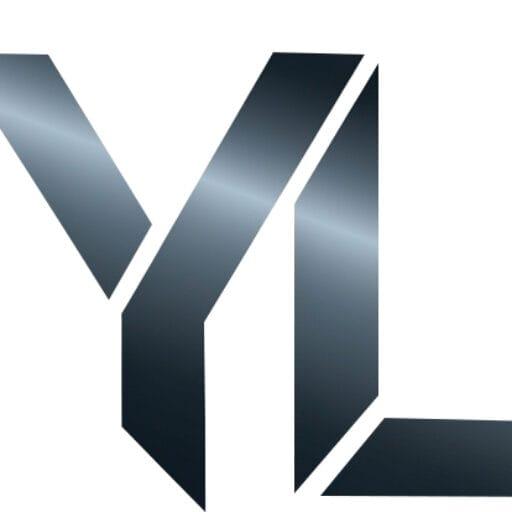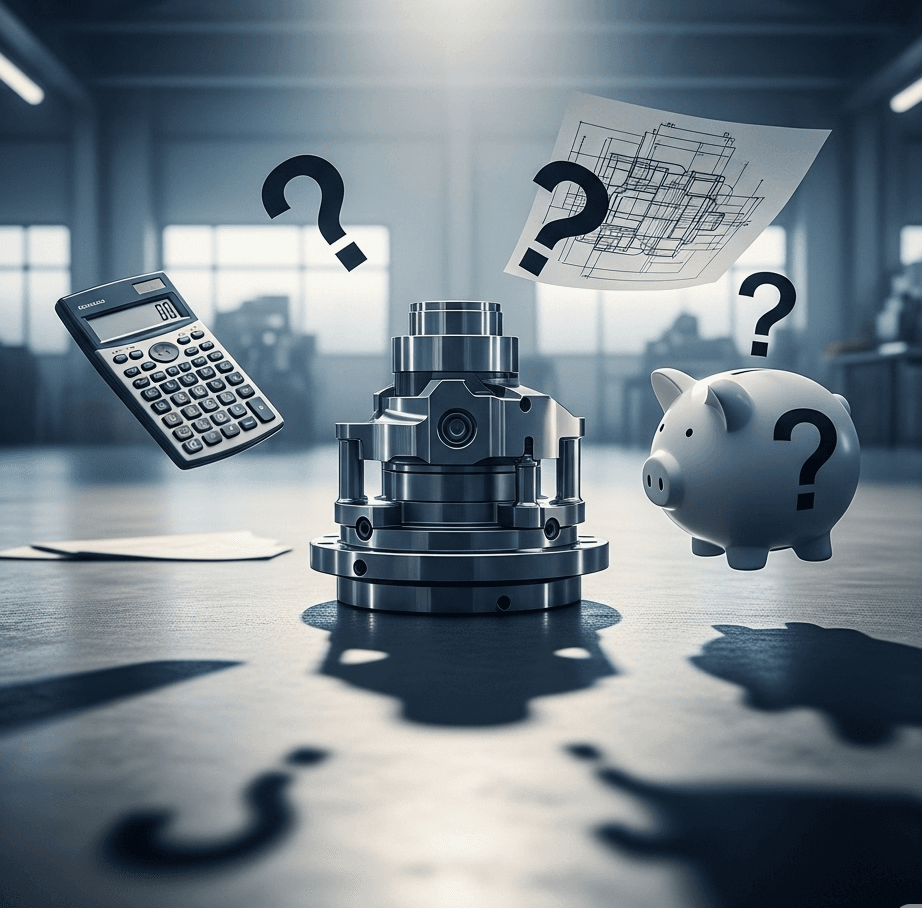Need a budget for your new CNC parts but don’t want to wait days for a formal quote? Trying to estimate manufacturing costs early in the design phase is often a frustrating guessing game, leaving your project planning in limbo. Without a reliable estimation method, you risk under-budgeting or designing a part that is far too expensive to produce.
This uncertainty can stall innovation and delay critical project timelines. You need a fast, straightforward way to calculate an approximate cost to guide your design decisions and secure budget approval efficiently. Understanding the key cost drivers is essential for creating economically viable CNC parts.
At [ly-machining], we provide a simplified framework to help you generate a quick, back-of-the-napkin cost estimate for your CNC machining needs. By breaking the cost down into four main components—material, machine time, setup, and finishing—you can build a confident preliminary budget. This guide will walk you through a practical estimation process.

The Core CNC Machining Cost Formula
A reliable estimate for CNC parts doesn’t require complex software. You can get a solid approximation by focusing on the primary cost contributors. The fundamental goal is to calculate the cost to run the CNC machine for the required time and add the costs of material and any secondary processes.
A simple but effective formula is:
EstimatedCost=(MaterialCost)+(SetupCost+MachineTimeCost)+(FinishingCost)
Let’s break down how to estimate each of these variables. This approach is highly effective for both CNC milling and turning operations and will give you a realistic financial picture of your project before you even request a formal quote.
Calculating Material Cost
The first and often most straightforward component to estimate is the cost of the raw material. You will need to calculate the total volume of the stock material required to make your part, not just the volume of the final part itself. CNC machining is a subtractive process, so you pay for the initial block or rod of material, including the portion that gets cut away.
- Determine the Bounding Box: Find the smallest rectangular block (or cylinder for turned parts) that your part fits inside. This is your required stock size. Add a small margin (e.g., 2-5mm) to each dimension for workholding and cleanup.
- Calculate the Volume: Multiply the length, width, and height of this bounding box to get the total volume.
- Find the Material Price: Look up the current market price for your chosen material (e.g., Aluminum 6061, Stainless Steel 304) per unit of volume or weight. Online material suppliers are a great source for this data.
Example:
- Part fits in a 100mm x 50mm x 20mm block.
- Volume = 100 * 50 * 20 = 100,000 mm³ (or 100 cm³).
- If Aluminum 6061 costs $0.005 per cm³, the material cost is 100 * $0.005 = $0.50.
Remember to account for waste. For complex parts, the material removed can be substantial. For simple CNC parts, the material cost is often a smaller fraction of the total price compared to machine time.

Estimating Setup and Machine Time
This is the most critical and variable part of the cost estimation. It combines the one-time setup labor with the time the CNC machine spends cutting your part.
A. Setup Cost The setup cost is a one-time fee per production run. It covers the time a skilled machinist takes to prepare the job: programming the machine (CAM), preparing fixtures, loading tools, and calibrating the machine.
- Simple Parts: For a simple part that can be made in a single setup, you can estimate 1-2 hours for setup.
- Complex Parts: For parts requiring multiple setups (re-orienting the part to machine different faces) or custom fixturing, this could be 3-8 hours or more.
To get the cost, multiply the estimated hours by the shop’s hourly rate. A general rate for CNC machining services can range from $75 to $150 per hour, depending on the machine’s capability and location. Let’s use $100/hour as an average.
- Setup Cost = Setup Hours * Shop Rate (e.g., 1.5 hours * $100/hr = $150). This cost is amortized over the quantity of parts.
B. Machine Time Cost Machine time is the duration the CNC machine is actively working on a single part. It is heavily influenced by:
- Part Complexity: More features, intricate curves, and tight tolerances increase time.
- Material Removal Volume: The more material that needs to be cut away, the longer it will take.
- Material Machinability: Harder materials require slower cutting speeds, extending the time.
A quick way to estimate machine time is to categorize your part’s complexity:
- Simple: (e.g., a flat plate with a few holes) ~ 10-20 minutes.
- Moderate: (e.g., a housing with pockets and through-holes) ~ 30-60 minutes.
- Complex: (e.g., an organic shape with 3D surfacing) ~ 1-4 hours+.
Machine Time Cost (per part) = Estimated Time in Hours * Shop Rate. For a moderately complex part taking 45 minutes (0.75 hours): 0.75 hours * $100/hr = $75 per part.

Factoring in Finishing and Other Services
Never forget to add the cost of any required post-processing. These services are priced individually and added to the cost of each part. If your CNC parts need specific surface treatments, it will impact the final price.
Common finishing services include:
- Anodizing (Type II): Typically adds a few dollars per part, often with a minimum lot charge. Estimate $5 – $15 per part for small batches.
- Bead Blasting: A less expensive option to create a uniform matte finish. Estimate $2 – $8 per part.
- Powder Coating: A durable finish that can be more expensive. Estimate $10 – $30 per part depending on size and color.
- Deburring & Tapping: If not included in the machine time, manual deburring or tapping of threads adds labor cost.
Always ask if standard deburring is included in the base CNC milling cost. For a quick estimate, add a percentage of the machining cost (e.g., 10-20%) if you require standard finishing, or use the per-part estimates above.
Putting It All Together: A Sample Estimation
Let’s estimate the cost for a single prototype of a moderately complex aluminum part.
- Part: Enclosure, 150mm x 100mm x 30mm
- Quantity: 1
- Material: Aluminum 6061
- Material Cost:
- Stock Volume: ~15.5cm x 10.5cm x 3.5cm = 570 cm³
- Cost @ $0.005/cm³ = ~$2.85
- Setup & Machine Time Cost (Shop Rate: $100/hr):
- Setup: Moderate complexity, requires 2 setups (top and bottom). Estimate 2.5 hours.
- Setup Cost = 2.5 hr * $100/hr = $250
- Machine Time: Moderate complexity, significant material removal. Estimate 1.25 hours.
- Machine Time Cost = 1.25 hr * $100/hr = $125
- Setup: Moderate complexity, requires 2 setups (top and bottom). Estimate 2.5 hours.
- Finishing Cost:
- Requirement: Class 2 Anodizing (Black).
- Estimated Cost (lot charge for one part) = ~$50
Total Estimated Cost for 1 Part:
$2.85 (Material) + $250 (Setup) + $125 (Machine Time) + $50 (Finishing) = $427.85
Now, see what happens with a quantity of 50 parts: The Setup Cost ($250) and Finishing lot charge ($50, might increase slightly) are now spread across 50 units.
- Setup cost per part = $250 / 50 = $5
- Finishing cost per part = ~$55 lot charge / 50 = ~$1.10
- Material and Machine time per part remain the same: $2.85 + $125
Estimated Cost per part for 50 units: $2.85 + $5 + $125 + $1.10 = $133.95 This demonstrates the powerful effect of quantity on CNC machining pricing.

Related Questions
How does a CAD model help in cost estimation?
A 3D CAD model (like a STEP or STP file) is the most crucial element for an accurate quote. Quoting software used by CNC machining shops like [ly-machining] can automatically analyze the model to calculate the material volume, identify features, and simulate toolpaths to estimate the machine time with high precision. Providing a complete CAD model is the fastest way to move from a rough estimate to a firm quote.
Are there free online CNC cost calculators?
Yes, several online manufacturing platforms offer instant quoting tools. You can upload your CAD file, and their software will provide an immediate price. These calculators are excellent for getting a quick baseline price and comparing how changes in material or quantity affect the cost of your CNC parts.
Frequently Asked Questions
1. How accurate is this manual estimation method?
This method can provide a ballpark estimate that is often within 20-30% of a formal quote for standard CNC parts. Its main purpose is for early-stage budgeting and design-for-manufacturability analysis. For a precise price, you should always submit a formal Request for Quote (RFQ) with a detailed technical drawing.
2. Why is CNC milling for plastics sometimes as expensive as for aluminum?
While raw plastic material is cheaper, some plastics can be tricky to machine. Soft plastics may melt or gum up tools, while abrasive plastics (like glass-filled nylon) cause rapid tool wear. These factors can lead to slower machine speeds or require special tooling, making the machine time cost comparable to that of free-machining aluminum.
3. How much does an urgent “rush” order add to the cost?
A rush order typically adds a significant premium, often ranging from 25% to 100% or more of the standard cost. This extra charge covers overtime labor, express shipping of materials or tools, and the cost of rescheduling other jobs in the production queue. If you can plan for standard lead times, you can avoid these extra fees on your CNC machining project.

